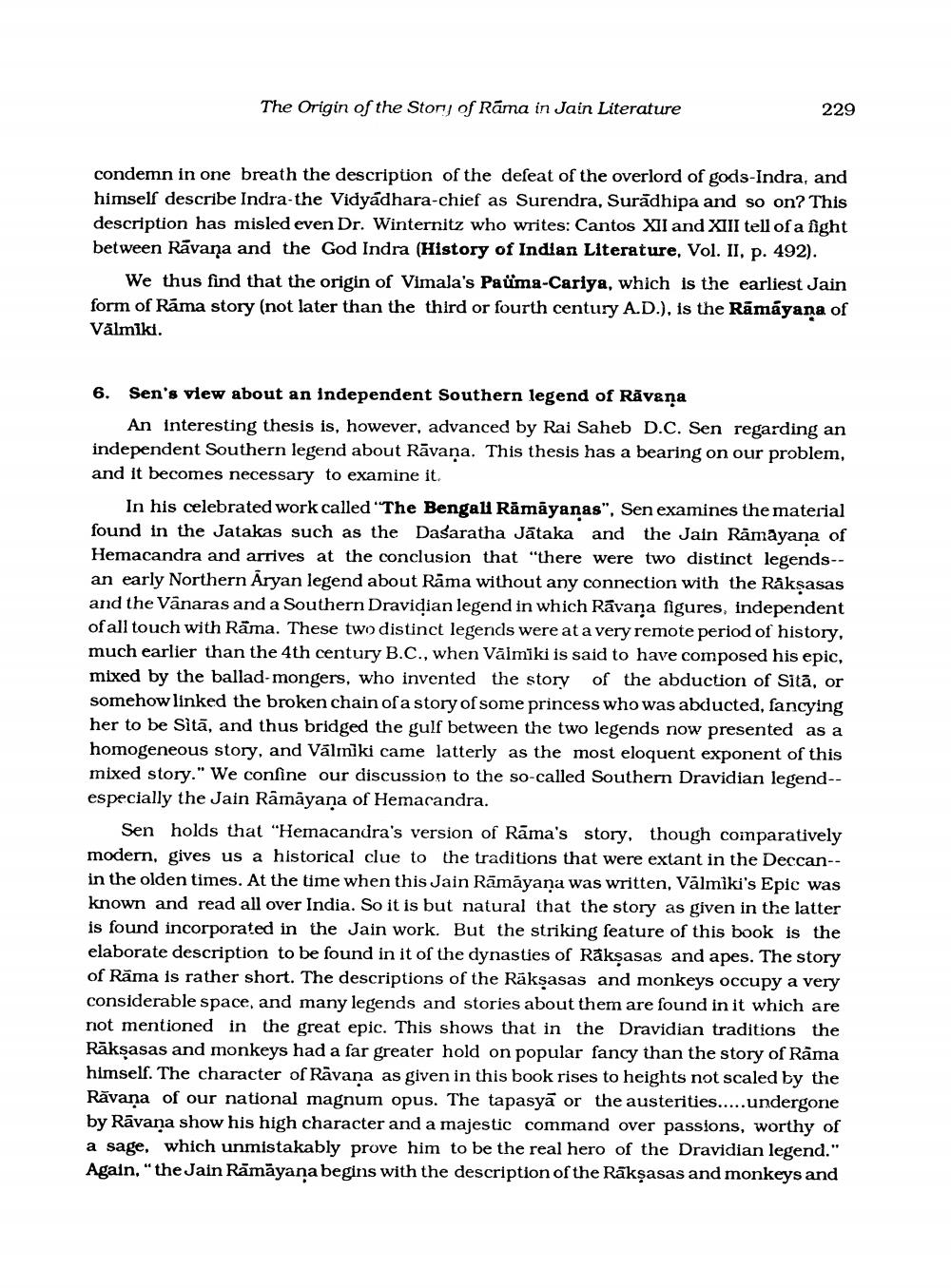________________
The Origin of the Story of Rāma in Jain Literature
229
condemn in one breath the description of the defeat of the overlord of gods-Indra, and himself describe Indra the Vidyadhara-chief as Surendra, Surădhipa and so on? This description has misled even Dr. Winternitz who writes: Cantos XII and XIII tell of a fight between Rāvana and the God Indra (History of Indian Literature, Vol. II, p. 492).
We thus find that the origin of Vimala's Paüma-Cariya, which is the earliest Jain form of Rama story (not later than the third or fourth century A.D.), is the Rāmáyana of Valmiki.
6. Sen's view about an independent Southern legend of Rāvana
An Interesting thesis is, however, advanced by Rai Saheb D.C. Sen regarding an independent Southern legend about Rāvana. This thesis has a bearing on our problem, and it becomes necessary to examine it.
In his celebrated work called "The Bengali Rāmāyanas", Sen examines the material found in the Jatakas such as the Dasaratha Jātaka and the Jain Rämāyana of Hemacandra and arrives at the conclusion that "there were two distinct legends-- an early Northern Aryan legend about Rama without any connection with the Raksasas and the Vanaras and a Southern Dravidian legend in which Rāvana figures, independent of all touch with Rāma. These two distinct legends were at a very remote period of history, much earlier than the 4th century B.C., when Vālmīki is said to have composed his epic, mixed by the ballad-mongers, who invented the story of the abduction of Sitā, or somehow linked the broken chain of a story of some princess who was abducted, fancying her to be Sitā, and thus bridged the gulf between the two legends now presented as a homogeneous story, and Vālmiki came latterly as the most eloquent exponent of this mixed story." We confine our discussion to the so-called Southern Dravidian legend-- especially the Jain Rāmāyaṇa of Hemacandra.
Sen holds that “Hemacandra's version of Rāma's story, though comparatively modern, gives us a historical clue to the traditions that were extant in the Deccanin the olden times. At the time when this Jain Rāmāyana was written, Valmiki's Epic was known and read all over India. So it is but natural that the story as given in the latter is found incorporated in the Jain work. But the striking feature of this book is the elaborate description to be found in it of the dynasties of Rākşasas and apes. The story of Rāma is rather short. The descriptions of the Räkşasas and monkeys occupy a very considerable space, and many legends and stories about them are found in it which are not mentioned in the great epic. This shows that in the Dravidian traditions the Rākşasas and monkeys had a far greater hold on popular fancy than the story of Rāma himself. The character of Rāvana as given in this book rises to heights not scaled by the Rāvana of our national magnum opus. The tapasyā or the austerities..... undergone by Rāvana show his high character and a majestic command over passions, worthy of a sage, which unmistakably prove him to be the real hero of the Dravidian legend." Again," the Jain Rāmāyana begins with the description of the Rakşasas and monkeys and




